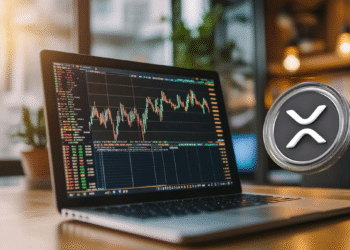Key takeaways
-
Tether operates a Treasury- and repo-heavy balance sheet, holding $181.2 billion in reserves against $174.5 billion in liabilities, leaving $6.8 billion in excess.
-
High interest rates have turned those reserves into profit, generating more than $10 billion in interest income so far in 2025, which is uncommon for a typical crypto issuer.
-
It exercises policy-style levers by freezing sanctioned wallets, shifting supported blockchains and allocating up to 15% of profits to Bitcoin.
-
The central bank comparison has limits. Tether has no public mandate or backstop, relies on attestations instead of full audits and depends on private counterparties.
Tether no longer looks like a simple stablecoin company. It runs a balance sheet packed with short-term US Treasurys, reverse repos, gold and even Bitcoin (BTC). It mints and redeems dollars at scale and can freeze addresses at the request of law enforcement.
Its latest attestation shows $181.2 billion in reserves against $174.5 billion in liabilities, leaving $6.8 billion in excess and more than $174 billion in USDt (USDT) in circulation. With interest rates high, that Treasury-heavy portfolio has generated over $10 billion in profit so far in 2025, a figure more typical of a financial institution than a crypto startup.
That is why both critics and supporters say Tether is behaving like a private dollar-linked central bank for parts of the crypto economy, though without a sovereign mandate or safety net.
Acting like a central bank: What does that mean?
In practice, Tether does four things that resemble central bank behavior.
First, it issues and redeems money on demand. Verified customers mint new USDT by wiring in fiat and redeem it by sending USDT back for dollars. This primary market expands or contracts supply, while secondary-market trading occurs on exchanges. The actual balance sheet changes take place within that mint and redeem pipeline.
Second, it manages reserves like a fixed-income desk, parking most assets in short-duration US Treasurys and repos, with some gold and Bitcoin. A Treasury-heavy portfolio preserves liquidity and adds steady demand for T-bills, which bond desks now actively track when identifying major buyers of US debt.
Third, it earns what resembles seigniorage in a high-rate environment. Users hold a non-interest-bearing token, while Tether collects interest on T-bills, resulting in more than $10 billion in profit and $6.8 billion in excess reserves as of the third quarter of 2025. That income stream is why the “private central bank” comparison resonates.
Finally, it uses policy-style tools such as contract functions that can freeze addresses at the request of law enforcement or sanctions authorities. It also has the ability to add or remove blockchains, for example, winding down Omni, BCH-SLP, Kusama, EOS and Algorand, to manage operational risk.
While this is not sovereign monetary policy, it still represents active intervention in a dollar-like asset used by hundreds of millions of people.
Did you know? Tether was originally launched as Realcoin in July 2014 and rebranded to Tether in November of the same year. It remains one of the oldest stablecoins still in active use today.
Expanding on policy levers that resemble central bank tools
Tether now intervenes in its own dollar system in ways that resemble policy tools.
On the compliance side, it can freeze addresses linked to sanctions or law enforcement actions. It first introduced a proactive wallet-freezing policy in December 2023 and has since used it in specific cases, such as wallets tied to the sanctioned Russian exchange Garantex. These are issuer-level interventions that immediately affect who can move dollar liquidity onchain.
On the market operations side, Tether’s reserves are managed like a short-term fixed-income portfolio, heavily weighted toward US Treasurys and reverse repos. This structure allows mint and redemption activity to align with highly liquid assets that earn interest while maintaining flexibility.
In Tether’s latest attestation, that mix helped generate multibillion-dollar profits and a sizable excess reserves buffer. These mechanics resemble open-market-style management, even though Tether remains a private issuer rather than a central bank.
Tether also defines its own operating perimeter. It has added and retired blockchains to focus activity where usage and infrastructure are strongest, ceasing minting and later support on legacy networks such as Omni, BCH-SLP, Kusama, EOS and Algorand, while continuing redemptions during a transition period.
Separately, it diversifies reserves by allocating up to 15% of realized operating profits to Bitcoin, a policy introduced in 2023 that represents another issuer-level decision with system-wide effects.
From stablecoin issuer to infrastructure player
Over the past 18 months, Tether has transformed from a single-token company into a broader financial infrastructure group.
In April 2024, it reorganized into four operating divisions: Tether Finance, Tether Data, Tether Power and Tether Edu. These divisions manage Tether’s digital asset services, data and AI ventures (such as Holepunch and Northern Data), energy initiatives and educational programs. The restructuring formalized a strategy that extends well beyond issuing USDT.
On the Power side, Tether has committed capital and expertise to Volcano Energy in El Salvador, a 241-megawatt wind and solar park designed to power one of the world’s largest Bitcoin mining operations. The project directly supports payment and settlement uptime. The company has also ended support for several legacy blockchains to concentrate liquidity where tooling and demand are strongest, a network operations decision with ecosystem-wide effects.
To address the US market directly, Tether announced USAT (USAT), a planned US-regulated dollar token to be issued by Anchorage Digital Bank under domestic rules, alongside its existing offshore USDT. If launched as described, USAT would provide Tether with a compliant onshore platform, while USDT would continue to serve global markets.
Why the analogy breaks
Importantly, Tether is not a sovereign monetary authority.
It does not set interest rates, act as a lender of last resort or operate under a public mandate. Its transparency still relies on quarterly attestations rather than a full financial audit, even though the company says it has been in discussions with a Big Four firm about auditing its reserves.
That gap between attestation and audit is one reason critics reject the “central bank” label.
There are also balance sheet concerns. Tether has at times maintained a secured loan portfolio after previously stating it would reduce such exposure. This asset category attracts scrutiny because terms and counterparties matter. More broadly, the company depends on private banking, custodial and repo counterparties rather than a sovereign backstop, meaning confidence and market infrastructure remain outside its direct control.
Finally, some of Tether’s most policy-like actions are primarily compliance measures, such as proactively freezing addresses listed by sanctions authorities.
Did you know? In December 2023, Tether said it had assisted more than 140 law enforcement agencies across 45 jurisdictions in freezing $835 million connected to scams and illicit activities.
Where Tether fits in the bigger picture
Ultimately, Tether looks less like a typical stablecoin issuer and more like a private, dollar-denominated central bank for crypto. It expands and contracts supply through large-scale minting and redemptions, holds short-dated Treasurys and repos, earns multibillion-dollar interest income and can step in with compliance actions when required.
However, the analogy only goes so far. There is no public mandate or backstop, transparency still depends on attestations, and its policy-like actions are largely focused on compliance rather than macro management.
Keep an eye on reserve composition, profits, redemptions, audit progress and, in the US, how the USAT plan with Anchorage unfolds because that is where the story will either continue to resemble central banking or begin to diverge.














